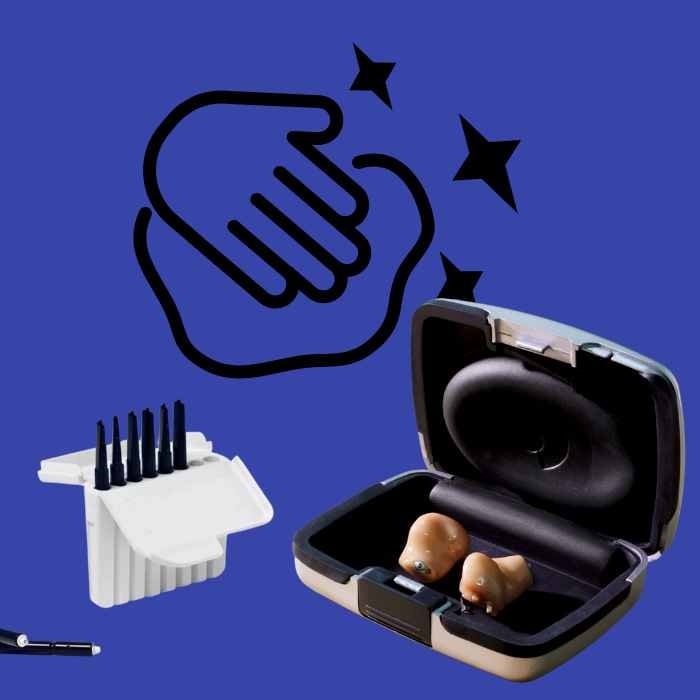One of the most important parts of using (and wearing) hearing aids? Keeping them clean. As an audiologist, I know how important it is to keep them clean and well-maintained.
Sometimes, patients come into the office thinking that their hearing has changed or their hearing aids aren’t working correctly, but really the devices just need a good cleaning. Regular cleaning prevents hearing aids from clogging with wax, dust, and other debris, which can affect the sound quality. Keeping your hearing aids clean and free of wax and debris means you'll hear your best, keep your ears healthy, and extend the life of your hearing aids. In this guide, I will outline the steps for properly cleaning your hearing aids so that you can enjoy optimal sound quality.
ITE, RIC, or BTE hearing aid?
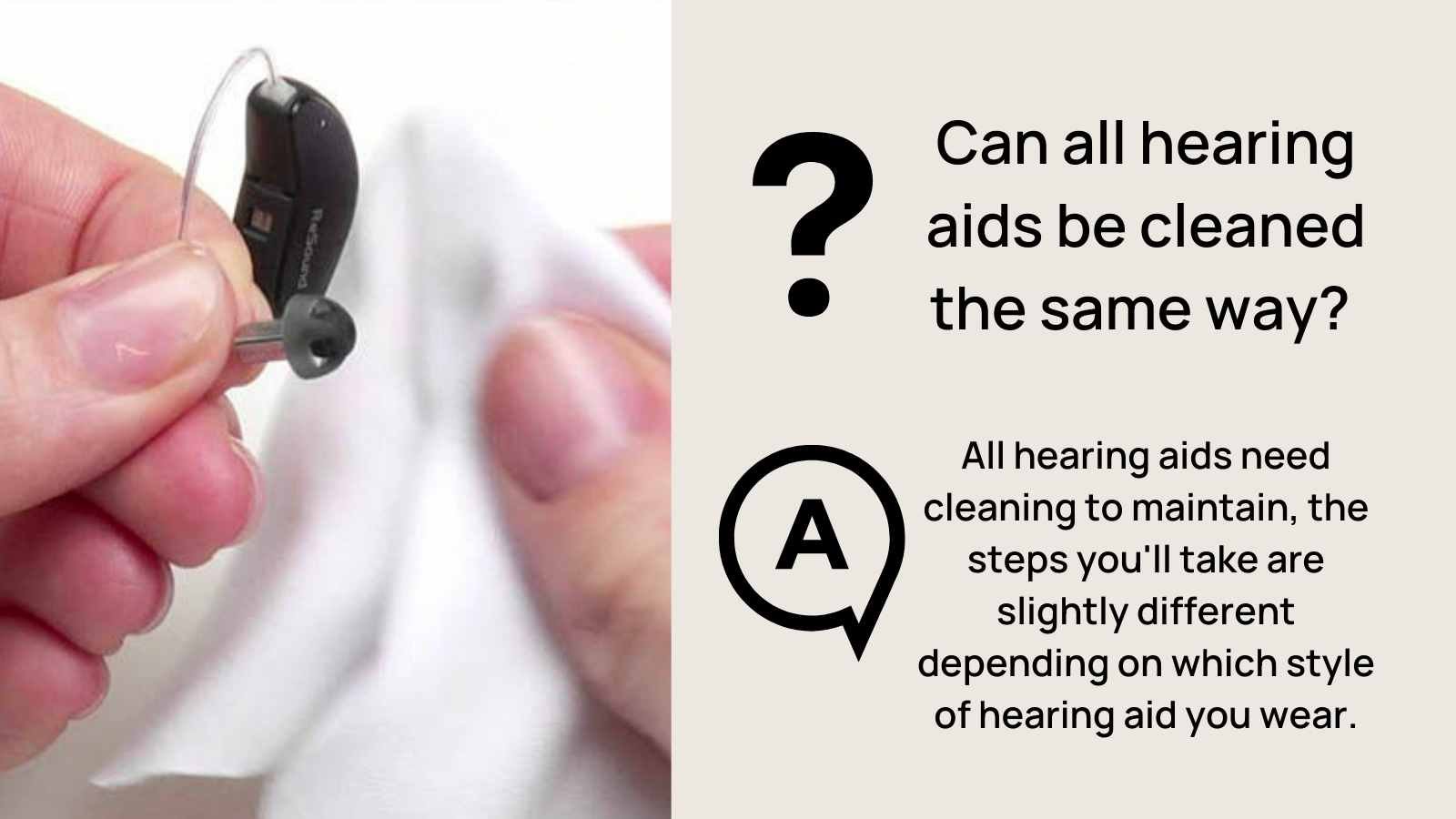
While all hearing aids need cleaning to maintain, the steps you'll take are slightly different depending on which style of hearing aid you wear. Now, we'll go through what to consider when cleaning each style.
Here are two main points to consider when cleaning a hearing aid:
Daily Maintenance: Remove Earwax
To prevent build-up, use a tissue to wipe off the portion that goes in the ear (e.g., earmold, dome tip, or the ear canal portion in a custom hearing aid) before storing it in the charger or case for the night. In the morning, use a brush—a child's toothbrush also works well—to remove any remaining debris that dries overnight.
Monthly Maintenance: Remove Earwax
You must replace the wax guard regularly if you wear a RIC hearing aid or custom hearing aid (e.g., ITE, ITC, CIC, or IIC). Wax production can vary depending on the individual, but you'll generally replace the wax guard once per month. If you produce a lot of earwax, you may need to replace the wax guard more frequently. For example, if you notice that the sound is much softer than usual, replace the wax guard.
What to keep in mind: Different hearing aid manufacturers have different types of wax guards. For example, Phonak wax guards for the RIC product will come in a small disc that rotates, while other types of wax guards typically come in a small case and resemble match sticks.
What You'll Need
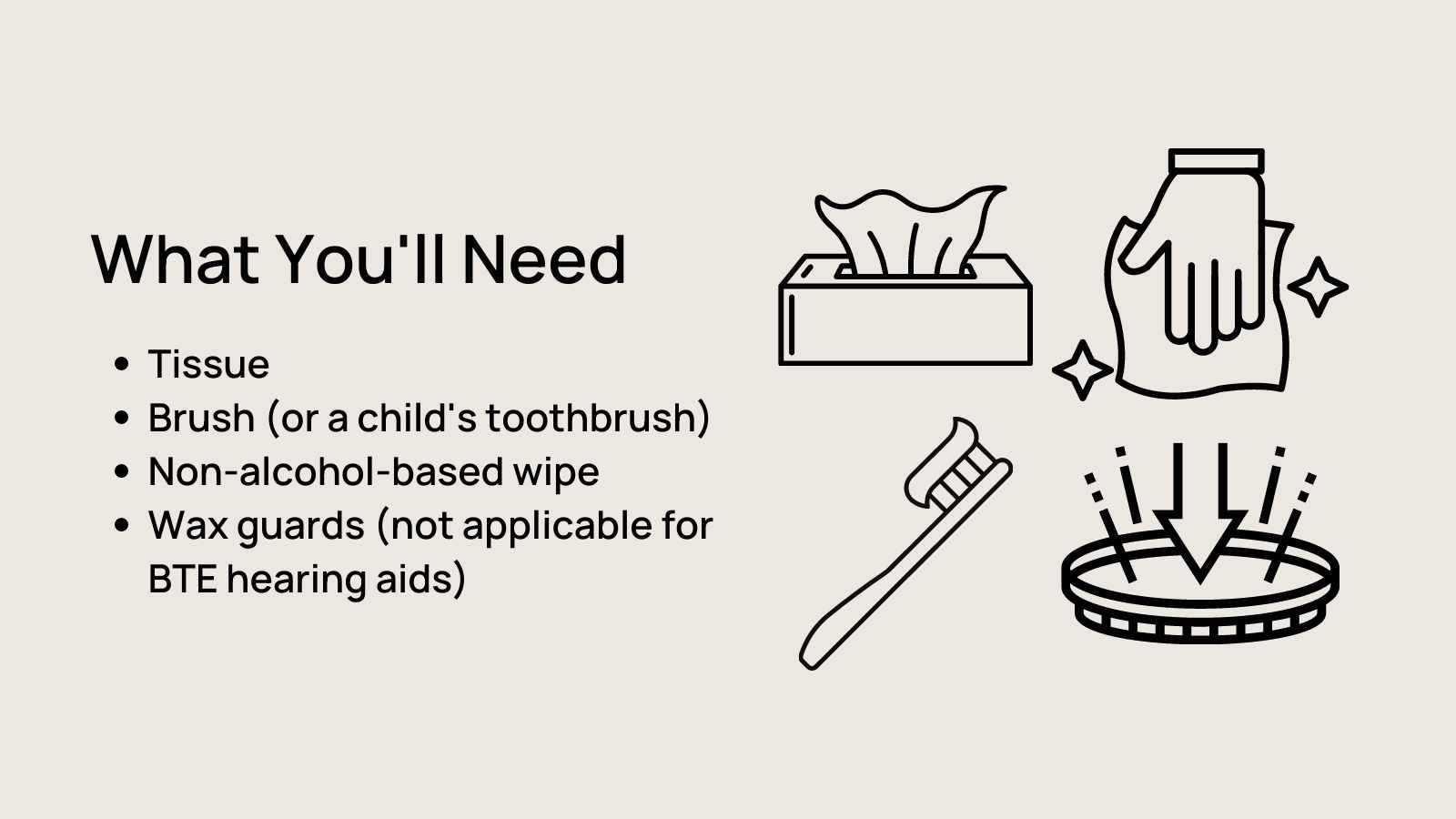
Before you start cleaning your hearing aids, make sure you have the following items:
- Tissue or a soft cloth
- Brush (or child's toothbrush)
- Non-alcohol-based wipe
- Wax guards (not applicable for BTE hearing aids)
Nightly Cleaning Procedure
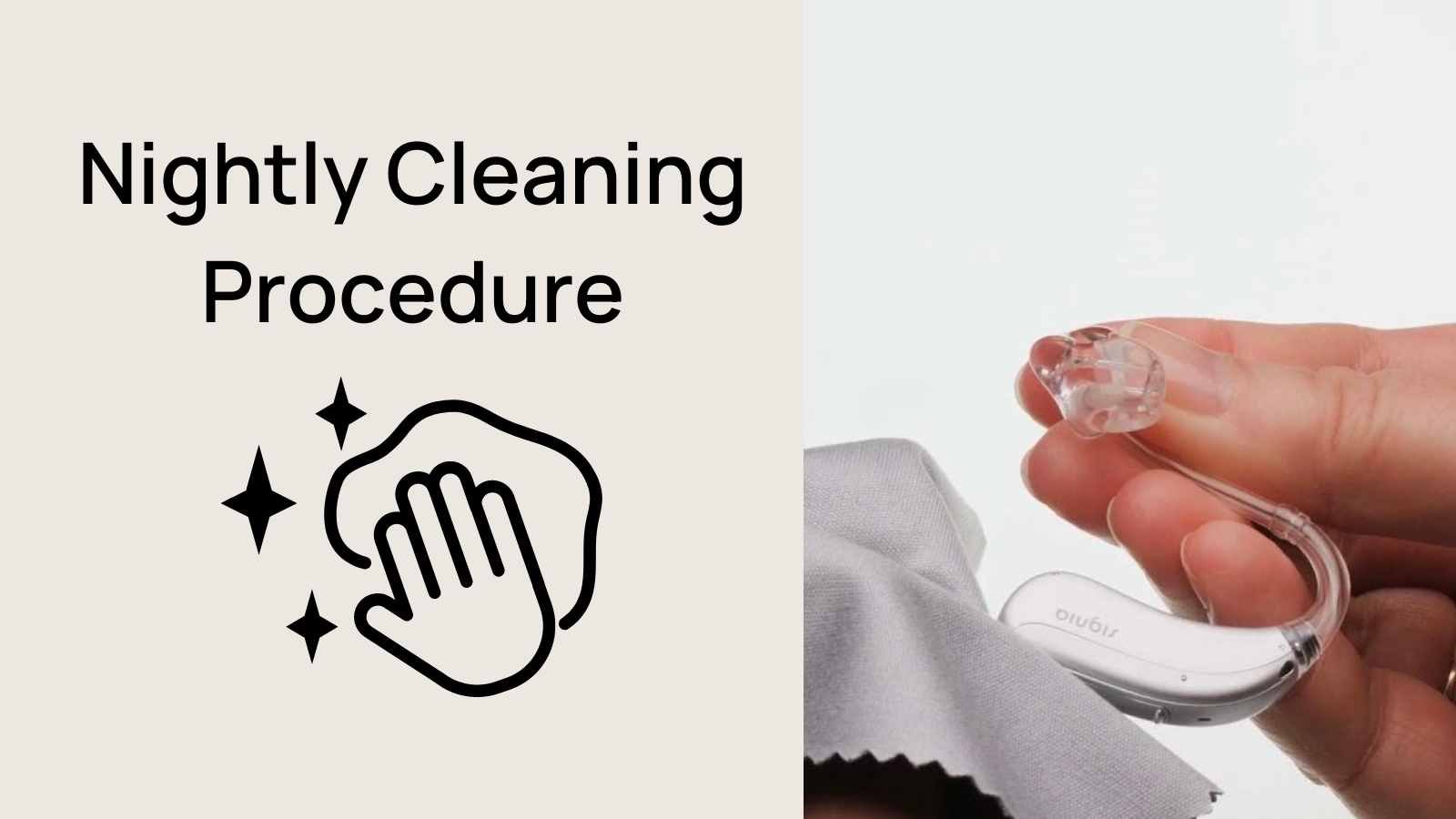
Once you have all of the supplies, follow these steps for cleaning your hearing aids:
1. After removing your hearing aids from your ears, visually inspect the wax guards and vent (small opening on the earmold) for any build-up. Next, use a tissue or non-alcohol-based wipe to gently wipe off any wax or debris after removing your hearing aids from your ears at the end of the day.
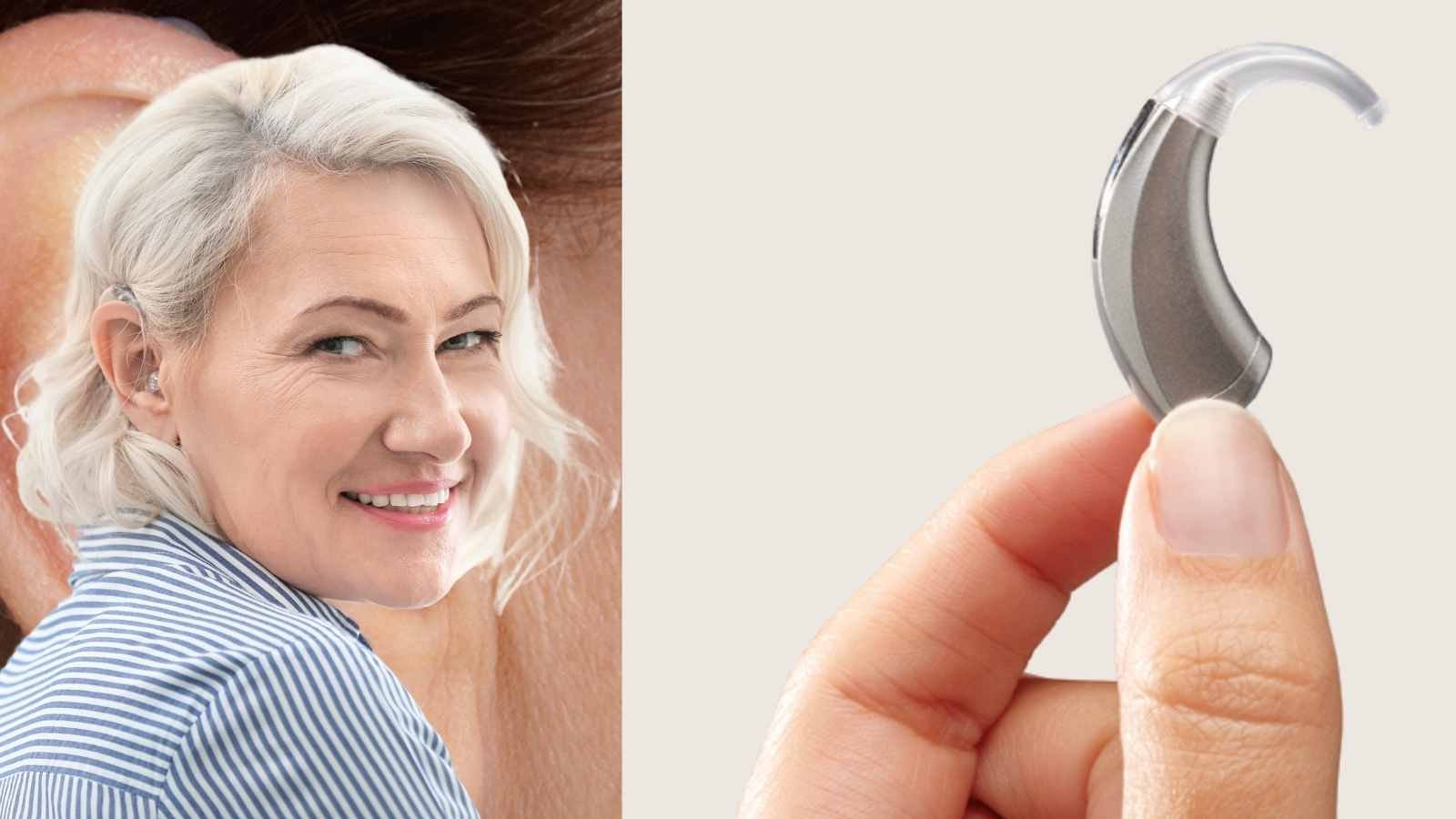
2. Hold the hearing aid with the microphone ports facing downward, which helps gravity pull any dirt or debris away from the hearing aid. Next, take a brush and gently brush the microphone ports on the hearing aid in gentle back-and-forth movements.
.jpg)
3. After storing your hearing aids for the night, use a brush to remove any debris that has dried overnight gently.
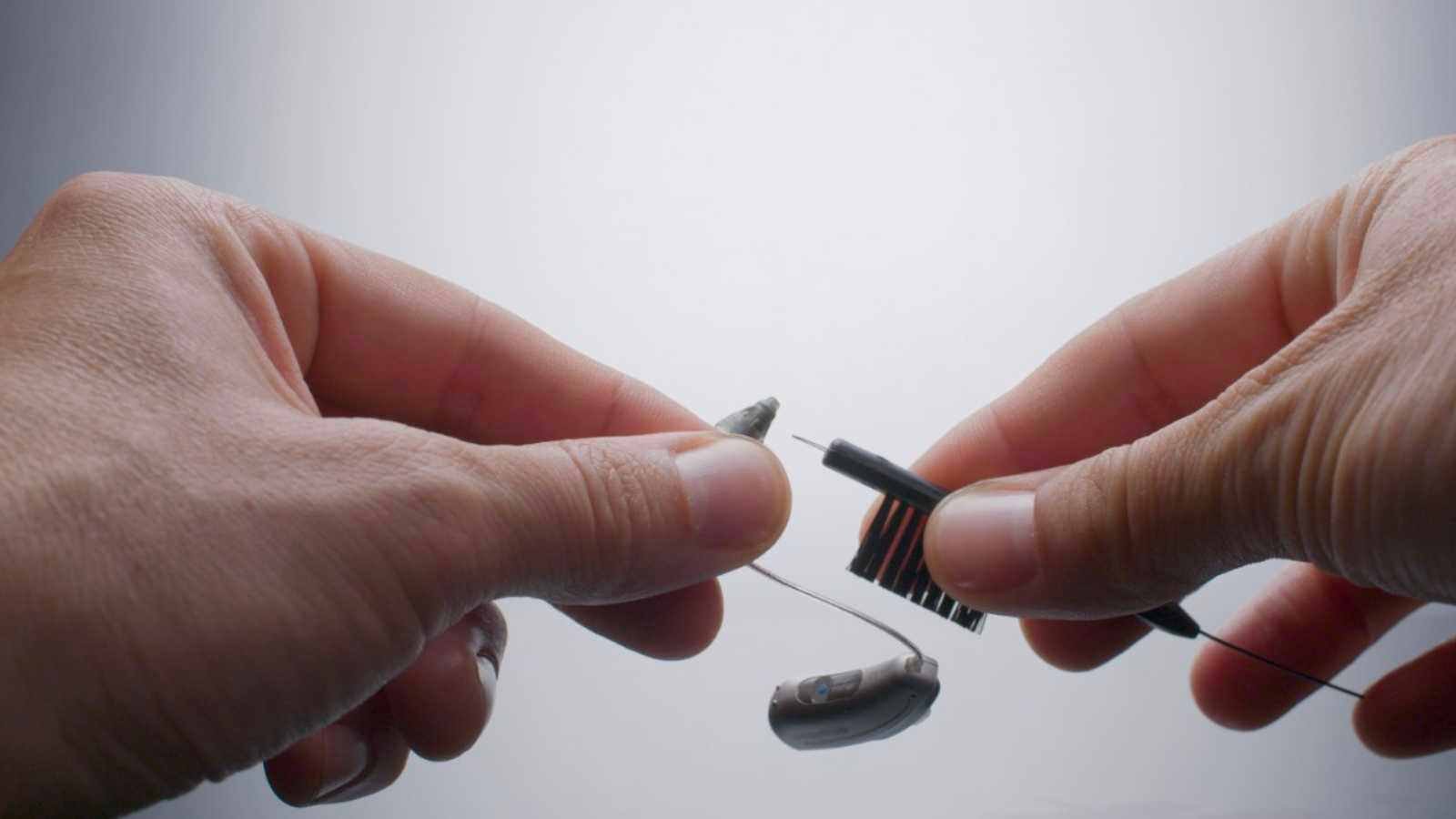
Changing A Wax Guard
.jpg)
Patients often ask how often they should replace a wax guard. The answer can vary depending on how much earwax you produce. However, once per month is a good rule of thumb. To change the wax guard, you'll follow a few easy steps.
1. Pull out a pack of wax guards. Depending on the manufacturer, it may look like a small disc or case resembling a match stick case.
2. If you have a dome tip, remove the dome tip to access the wax guard (and, this does not apply to an encased receiver or custom hearing aid).
3. Remove one of the sticks from the wax guard pack. It looks like a small stick with a fresh wax guard on one end and an open end, which you'll use to remove the old wax guard. Place the empty side into the old wax guard to grip it and pull it out.
4. Turn the stick around to the end with the fresh wax guard. Insert the new wax guard. Then, dispose of the stick after use.
Have a Phonak or Unitron product? Use a rotating disk and follow the same steps below.
1. Remove the old wax guard by inserting the receiver in the 'empty' slot,
2. Click the new wax guard into place by inserting the receiver into the slot with the fresh wax guard.
Helpful Tips
- If you use hairspray, avoid applying it while wearing your hearing aids. I remind patients of this when I see build-up from hairspray or other products on their hearing aids.
- Hearing aid parts are tiny. If cleaning is challenging to manage due to dexterity or eyesight, you can work with your local audiology clinic for a maintenance schedule. Many clinics have walk-in or drop-off hours and can clean your hearing aids for you at regular intervals. This is particularly handy for patients in care facilities, to get regular maintenance.
- If you are very active or live in a humid climate, use a hearing aid dryer once a week. Find time when you won't need your hearing aids for a few hours, like let’s say a few free hours on a Sunday afternoon. Turn the hearing aids off and place them in a hearing aid dryer (like a Zephyr). You can use various hearing aid dryers; for example, some manufacturers even offer chargers that incorporate a dryer, such as the Signia Dry & Store case.
Conclusion
Cleaning your hearing aid regularly is essential for maintaining optimal sound quality and preventing damage due to the build-up of dirt and debris over time. Following these steps will help ensure you get maximum performance from your device so you can hear your best daily. With this step-by-step guide, you now have all the information necessary to ensure that your hearing aid stays in tip-top shape!

